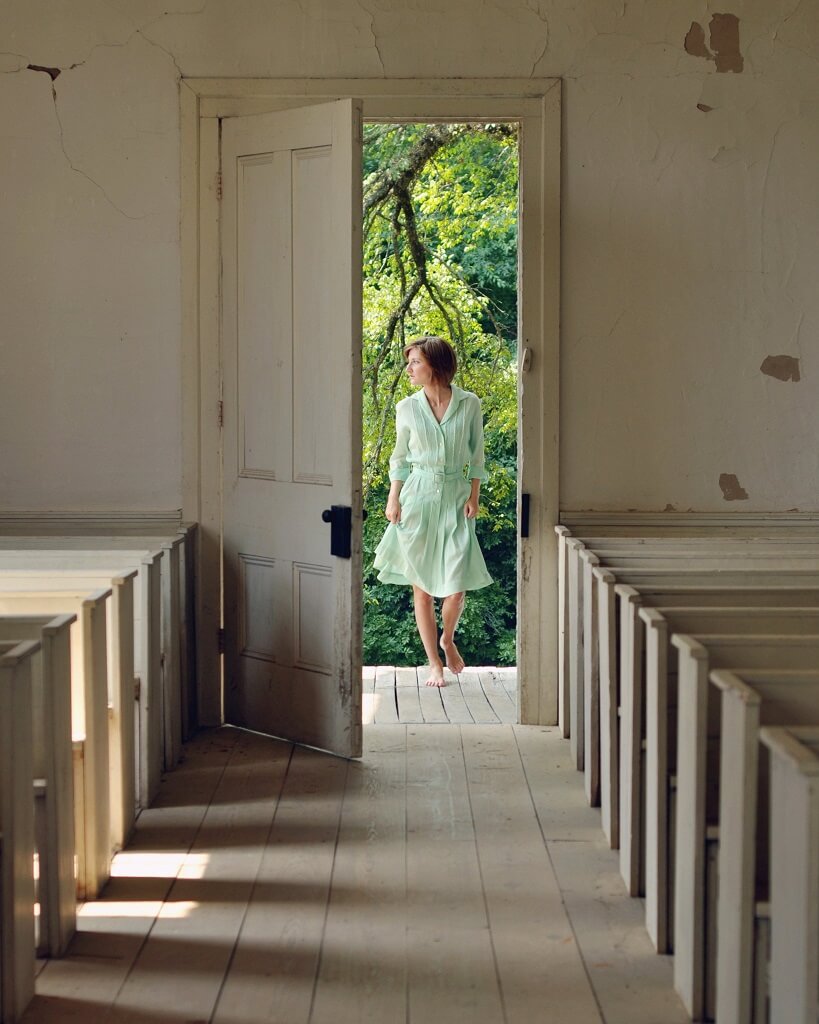- Lightroom Presets
- Mobile Presets
-
Photoshop
-
Learn
-
Support
-
Install
- Best Sellers
- Blog
By Anna Gay on | No Comments

Throughout the years, artists have used self portraits as a form of expressing themselves, and as a way of perfecting their craft. Vincent van Gogh, Frida Kahlo and even Leonardo da Vinci all dabbled in self portraiture.
Ever since photography was invented, photographers have used self portraits in much the same way as the great masters of visual art, honing their skills and expressing their feelings through a photograph.
As photographers, we often get too comfortable behind the lens, so putting ourselves in front of the lens can also be a great way to empathize with our subjects – once you have been in front of your own lens, you will know exactly how your subjects feel, and when you photograph people, a little bit of empathy can go a really long way!

Now, at this point, you are probably thinking to yourself, “This is all well and good, Anna, but where am I supposed to start?” at which point I would say “Just point your camera at yourself and click away!” but for most of us, it isn’t that easy.
Some of us are detail oriented and we need an assignment or an idea to get us started on something, while some of us dread the thought of photographing ourselves because of our own insecurity about being in front of the camera. We all have these feelings, trust me!
The great thing about self-portraiture, though, is that if you aren’t happy with your initial results, nobody has to see them but you. It is a completely safe way to experiment with lighting, posing, and conveying a mood through your photos.
So, let’s just start with a simple theme to get you started – Mood. That is a pretty general, theme, right? Well, the great thing about mood is that it gives you a lot of different options! Here are a few ways that you can create mood in a self portrait (or a portrait photograph of another person, for that matter):

We constantly rely on light for our photographs, because without light, you couldn’t have photography. Even if you’re doing a long exposure at night, you’re still relying on light from street lights, the moon and the stars.
If you want to convey a dramatic mood in your self-portrait, try low-light. If you want to convey a whimsical or quirky mood, use available light, whether it’s your desk lamp, the headlights on your car, or the light from a neon sign at a restaurant.
Light is all around us, and experimenting with different types of lighting will not only add different moods to your photos, it will also help you become more aware of your surroundings, which will open up a whole new world of possibilities in your photography.

The location of your photo can be a great indicator of mood. If you are new to self-portraiture, try going to a place that is special to you. Maybe you have a favorite park or coffee shop that has special meaning to you.
Part of the beauty of self-portraiture is that it is highly personal, and allows us to express what is important to us. If you are shy about photographing yourself in public, find a location that is important to you in your home where you spend a lot of time – it could be your office or study, your kitchen, or even your backyard.
Putting yourself in a location that has meaning to you will help you relax in front of the camera.

Just as you would incorporate props into your client shoots, try incorporating them into your self-portraits.
Much like location, props can carry a lot of meaning and convey elements of ourselves in front of the camera. I often use props in my self portraits because they not only highlight what is important to me in my own life, but they also help me stay secure in front of the camera because they give me something to focus on besides worrying about my crazy hair, or whether or not my nose looks too big from a certain angle.
Let’s face it, we all have these thoughts, and having a prop can give us something else to think about! So, try to think of props that are important to you – a family heirloom, your favorite record. You can even incorporate your pets into your photo!
Hopefully these ideas will help you get started on experimenting with a self-portrait and conveying different moods. Keep in mind, though, with self-portraiture, it is supposed to be a learning process – learning about photography, as well as yourself - so go easy on yourself, and have fun!
Read more Tips for Better Self Portraits Tips here.
Do you have any questions or comments about How to Take a Self Portrait? Just leave me a comment below - we would LOVE to hear from you. And PLEASE SHARE this post using the social sharing buttons (we really appreciate it)!




Anna Gay is a portrait photographer based in Athens, GA and the author of the dPS ebook The Art of Self-Portraiture. She also designs actions and textures for Photoshop. When she is not shooting or writing, she enjoys spending time with her husband, and their two cats, Elphie and Fat Cat.

Comments